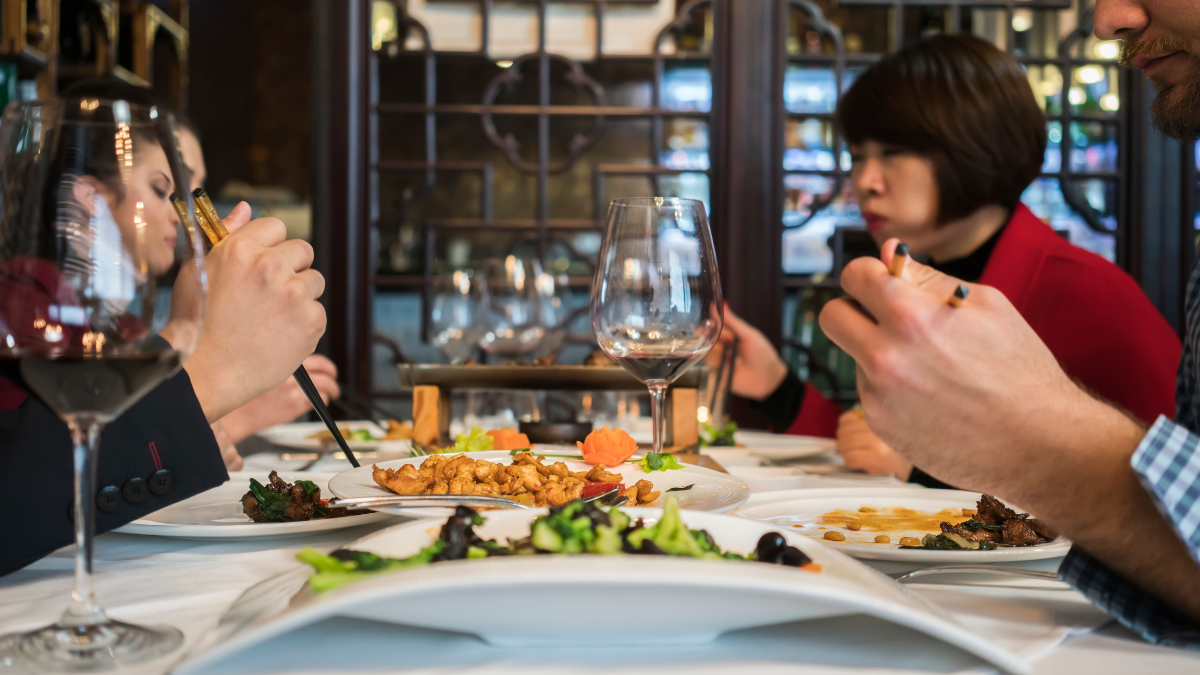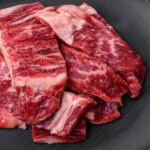Walk through almost any American town, and you are bound to see it: a storefront glowing with red neon, offering General Tso’s chicken, lo mein, and egg rolls beneath a sign that proudly reads Number 1 Chinese. The phrase is everywhere—on menus slipped through mailboxes, on the side of delivery cars, on strip mall marquees—and yet few stop to ask: why Number 1? What does it mean? And how did this seemingly simple title become the most recognizable calling card of Chinese food in America?
The answer begins with a story not only about food but also about migration, adaptation, and identity. “Number 1 Chinese” is more than just a name; it is a cultural shorthand for trust, affordability, and the promise of familiarity. In a culinary landscape filled with complexity, the phrase has become a universal symbol of consistency.
This article explores the phenomenon of Number 1 Chinese—its origins, meanings, and significance in the broader history of Chinese food in the United States and beyond.
The Rise of “Number 1 Chinese” in America
When Chinese immigrants began opening restaurants in the United States in the late 19th and early 20th centuries, they faced an enormous challenge. Their cuisine was unfamiliar to many Americans, and prejudices against Chinese communities often restricted opportunity. Restaurants became both a livelihood and a bridge. By the mid-20th century, Chinese food had become a mainstay of American dining culture.
The name Number1 Chinese emerged as part of this effort to market food to non-Chinese customers. In English, “Number 1” carries an immediate sense of quality, leadership, and trustworthiness. It signals the best. For Chinese restaurateurs, many of whom were competing in crowded local markets, the phrase provided instant branding without expensive advertising.
But unlike corporate chains with standardized menus, Number 1 Chinese is not one company. It’s a naming phenomenon—a kind of folk branding. Just as diners in the 1950s might have been called “Star,” “Golden,” or “Sunrise,” Chinese takeout spots often chose names like “Lucky,” “Happy,” or “Number 1.” Among these, Number1 Chinese rose above the rest, cementing itself as the most iconic.
What “Number 1” Means in Chinese Culture
While the English phrase resonates with ideas of being the best, it also carries deeper connotations in Chinese culture.
- Numerology and Fortune: In Chinese numerology, numbers have symbolic meanings. The number one (一, yī) signifies beginnings, leadership, and unity. It can symbolize the start of something new, an auspicious quality for a business.
- Aspirational Branding: Many Chinese businesses adopt names that signal success and prosperity. By calling a restaurant Number 1, owners align with the cultural value of striving for excellence.
- Translation Simplicity: For immigrant entrepreneurs with limited English skills, “Number 1” is easy to remember, simple to print, and universally understood.
Thus, the name bridges two worlds: it reassures English-speaking customers while honoring Chinese ideas of luck and ambition.
A Table of Common Chinese Restaurant Names
To understand the prevalence of Number1 Chinese, consider its peers. Across America, Chinese restaurant names fall into recognizable categories:
| Category | Examples | Meaning/Appeal |
|---|---|---|
| Aspirational / Ranking | Number 1 Chinese, King Wok, Best China | Signals superiority and reliability |
| Fortune / Happiness | Golden Dragon, Lucky Panda, Happy Wok | Evokes prosperity, joy, and good fortune |
| Nature / Beauty | Bamboo Garden, Jade Palace, Lotus House | Draws on natural imagery, elegance, and tradition |
| Geographic / Cultural | Hunan Kitchen, Peking Express, Szechuan Star | Highlights regional authenticity of Chinese cuisine |
| Modern / Fusion | Wok & Roll, Chopstick House, Panda Express | Blends humor, modernity, and accessibility |
Among these, Number1 Chinese stands out for its simplicity and universality. Unlike regional or cultural names that may intimidate unfamiliar diners, “Number 1” is approachable and instantly positive.
Why So Many Restaurants Use the Same Name
The ubiquity of Number1 Chinese has sometimes puzzled customers. After all, branding in most industries relies on uniqueness. But for immigrant-run small businesses, the strategy is different.
- Low Marketing Costs: Small restaurants rarely have the resources for elaborate advertising. A name like Number1 Chinese works like a self-contained billboard.
- Instant Recognition: A new restaurant opening in a small town might not be able to explain “Hunan cuisine” to its residents. But “Number1 Chinese” needs no explanation.
- Trust and Familiarity: In communities where customers may be wary of trying “foreign” foods, the reassuring language of Number 1 feels safe.
- Independent Yet Connected: Even though each Number 1 Chinese is independently owned, the shared name creates a network effect. Customers who liked one location may trust another elsewhere.
It’s a collective branding phenomenon, created not by franchise design but by repetition and cultural logic.
Inside a “Number 1 Chinese” Restaurant
Walk into a typical Number 1 Chinese location, and you’ll find a blend of efficiency and comfort. Menus are often laminated, with bright photos of dishes like sesame chicken and shrimp fried rice. The kitchen bustles behind a counter, where family members work side by side.
While dishes are sometimes adapted to American tastes, many restaurants also keep authentic options for those who ask. In some kitchens, the same wok that cooks General Tso’s chicken might also serve up stir-fried bitter melon or spicy Sichuan specialties for family meals.
Typical Features of a “Number 1 Chinese”:
- A mix of Cantonese-American classics and regional dishes
- Affordable lunch specials, often with soup and rice
- Quick takeout service, with delivery in larger towns
- Décor featuring Chinese symbols like dragons, lanterns, or bamboo
The atmosphere is less about fine dining and more about accessibility. For many working families, Number 1 Chinese is the go-to option for a quick meal after a long day.
The Role of Chinese Takeout in American Life
Beyond branding, Number 1 Chinese reflects the unique place of Chinese food in American culture. No other immigrant cuisine has so thoroughly integrated into daily life. Pizza and tacos may rival it in popularity, but Chinese food carries a special cultural weight.
- Convenience: Chinese takeout pioneered the model of quick, hot meals delivered to your door—long before apps like DoorDash existed.
- Affordability: For decades, Chinese food provided generous portions at low prices, making it accessible across class lines.
- Tradition: In some communities, eating Chinese food on Christmas or after late-night events has become a cultural ritual.
- Adaptability: Dishes like General Tso’s chicken or crab rangoon may not be traditional, but they evolved to meet American palates, showing the adaptability of Chinese cooking.
In this sense, Number 1 Chinese is not just a restaurant name; it’s a stand-in for the broader role of Chinese food as America’s comfort cuisine.
How Customers Interpret the Name
For customers, the phrase Number 1 Chinese often sparks subtle associations.
- Trustworthiness: If a restaurant calls itself “Number 1,” it must be good, right?
- Nostalgia: Many Americans grew up eating from a Number 1 Chinese in their hometown. The name evokes comfort and familiarity.
- Generic Identity: Some see the name as a symbol of sameness, part of the interchangeable strip mall landscape.
- Local Anchor: Despite the shared name, each Number 1 Chinese is rooted in its neighborhood, often serving generations of the same families.
This duality—generic yet personal—explains why the brand continues to resonate.
Contemporary Shifts: The New Face of Chinese Dining
While Number 1 Chinese remains a staple, the landscape of Chinese dining in America is evolving. In major cities, new waves of immigrants have brought more regional cuisines, from Xi’an’s hand-pulled noodles to Chongqing’s hot pot. Younger chefs are blending traditional techniques with modern flavors, winning Michelin stars and critical acclaim.
Yet in small towns, Number 1 Chinese continues to dominate. Its endurance reveals not stagnation but resilience. These restaurants survive economic downturns, adapt to delivery apps, and remain fixtures in their communities. They are often family-run, passed from one generation to the next.
The contrast between upscale urban Chinese dining and the humble Number 1 Chinese storefront tells a broader story about immigration, adaptation, and belonging. Both exist side by side, enriching America’s food culture.
A Cultural Symbol Beyond Food
In recent years, scholars and journalists have begun to examine Chinese takeout not just as food but as cultural heritage. Documentaries, photography projects, and books have explored the lives of the families behind Number 1 Chinese. For many, these restaurants represent the immigrant dream—hard work, sacrifice, and community ties.
The phrase itself, once chosen for marketing ease, has become a symbol of this journey. To call a place Number 1 Chinese is to place it within a shared story of resilience and adaptation.
FAQs
1. Why are so many Chinese restaurants called “Number 1 Chinese”?
Because the phrase is simple, positive, and easily understood. It signals trust and quality while requiring no translation.
2. Is “Number 1 Chinese” a franchise?
No. Each restaurant is independently owned. The shared name reflects a popular branding trend, not a chain.
3. What dishes are usually served at “Number 1 Chinese” restaurants?
Most serve Americanized Chinese classics like General Tso’s chicken, fried rice, and lo mein, alongside some authentic regional dishes.
4. Does “Number 1” have a cultural meaning in China?
Yes. The number one can symbolize beginnings, leadership, and unity, making it an auspicious choice for a business name.
5. How has Chinese dining in America changed in recent years?
While Number 1 Chinese remains common in small towns, major cities now feature more diverse regional cuisines and fine-dining Chinese restaurants.











